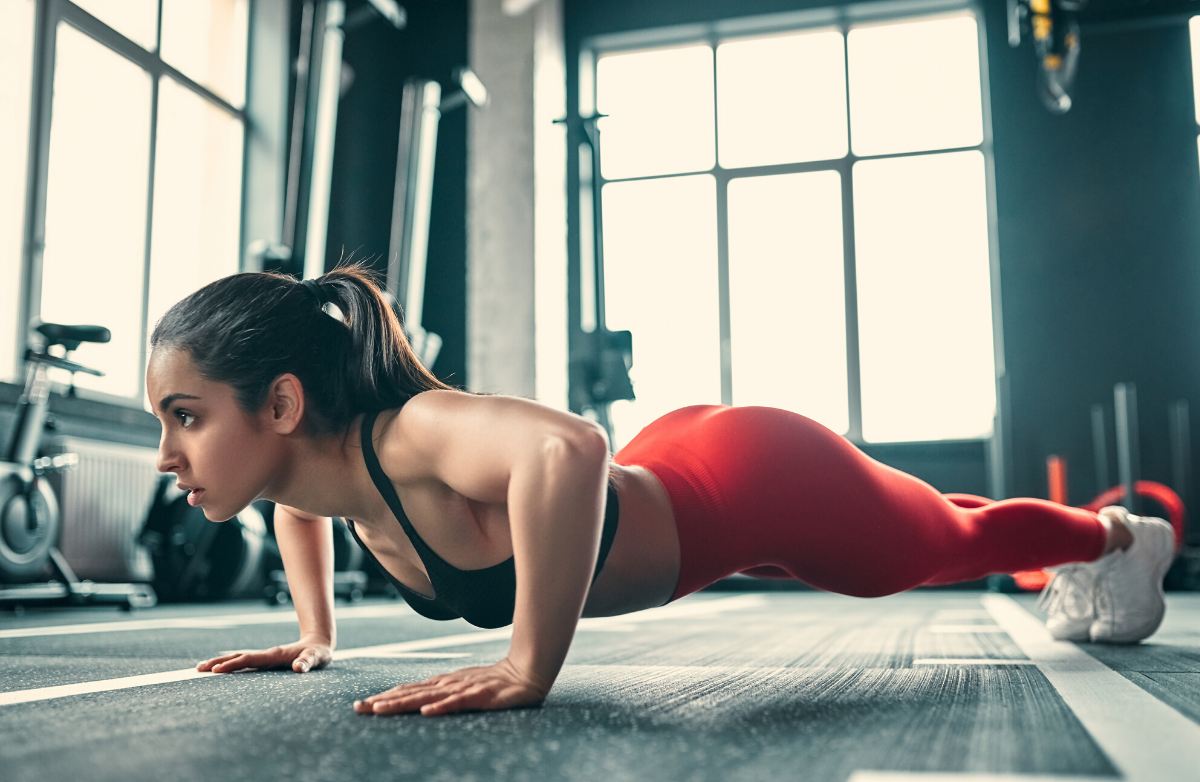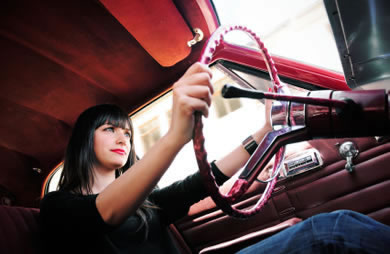|
Are you still doing crunches? While there is nothing inherently wrong with that classic abdominal move (I still do them from time to time myself), we now know more than ever about core training. And with this knowledge, you can graduate to a higher level of exercise that will help you get better results from your efforts. It's no secret that I love Pilates. I've been practicing and teaching it for several years now, and thanks to that consistency, I have better core strength and balance—and less back pain—than ever. One great thing about Pilates is that it helps you strengthen ALL of your core muscles. Whereas exercises like crunches only target the outermost abdominals (rectus abdominis), Pilates moves can engage and strengthen your internal and external obliques, erector spinae, and even your deepest abdominal muscle, the transversus abdominis. This muscle is extremely important, but hard to target, and often neglected by exercisers. A weak transverse can contribute to back pain, poor balance and an overall weak core—even if you do hundreds of crunches a day. But when strengthened, this important muscle helps you with functional strength—and aesthetic appearance. A strong transversus acts like a corset, not only bracing your core and protecting against injury and back pain, but helping create a leaner, flatter appearance of the stomach. No amount of crunches can do that! So which types of exercises best target your deep "corset" muscles? Research shows these two Pilates moves do it best. When researchers from Auburn University in Montgomery, Alabama tested the effectiveness of crunches against three common Pilates moves, they found that two of the Pilates exercises recruited the highest amount of muscle fibers in the transversus abdominis (and internal obliques). What were these two moves? "The Hundred" and the "Double Leg Stretch." Both of these moves can be modified for beginners and adjusted to add challenge for advanced exercisers as well! Here's how to do them.  The Hundred The HundredTHE SETUP: Lie on your back with your spine in neutral, your arms at your sides, your knees bent, your feet flat on the floor and your heels in line with your hips. INHALE to prepare. EXHALE to engage your abs and lift the feet off the floor to table top position (90 degrees at hips and knees). INHALE to reach your arms toward the ceiling (straight up). EXHALE to lower your arms toward your hips as you roll the head, neck and tips of your shoulder blades off the mat. Straighten the legs up (optional), then lower them as close to the mat as you can while maintaining a neutral spine (pictured). THE EXERCISE: Pulse the arms for five counts (hinging from the shoulder) while you INHALE. Pulse the arms for five counts while you EXHALE. Repeat for 10 total sets (100 arm pumps). NOTES: While your arms pump, the rest of the body should remain still and controlled. Keep your head tucked in toward your chest. Keep your elbows and wrists straight as the arms pump. Progression of intensity (for modification purposes) is pumping arms with feet flat on floor (very beginner), legs in table top (beginner), legs straight up (intermediate), straight legs lowered toward the floor (advanced). 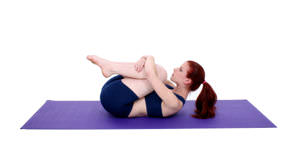 Double Leg Stretch Double Leg StretchTHE SETUP: Lie on your back with your head and the tips of your shoulder blades rounded off the mat, both knees pulled in toward your chest and hands on your shins or reaching toward your ankles (pictured). THE EXERCISE: INHALE to reach the legs straight out and the arms overhead without changing the curve of the upper body or the position of the lower back. EXHALE to draw the legs back into the chest, sweeping the arms around to grab the shins/ankles again. Repeat for 5-10 repetitions. NOTES: Keep legs squeezed tightly together. Only lower the legs as close to the floor as you can while staying in neutral spine. I demonstrate both of these moves (The Hundred at 1:36 and Double Leg Stretch at 4:05) in my Pilates Abs workout video, which you'll find at YouTube and embedded below. Try them yourself and I'm sure you'll feel the difference in your abs—and see a difference in your belly over time. Do you ever perform these Pilates moves? Do you think Pilates does help flatten and tone the belly? Be sure to use the Fitness Tracker to tally up your Pilates workouts! |
Related Entries
More From SparkPeople
|








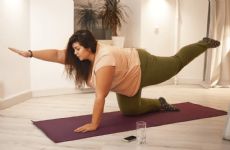
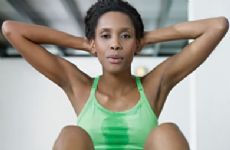

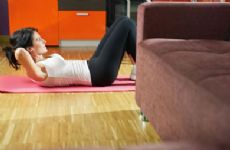
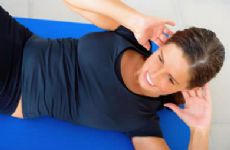




/52a6d277-bd14-4194-8009-35a03c88e960.jpg)


